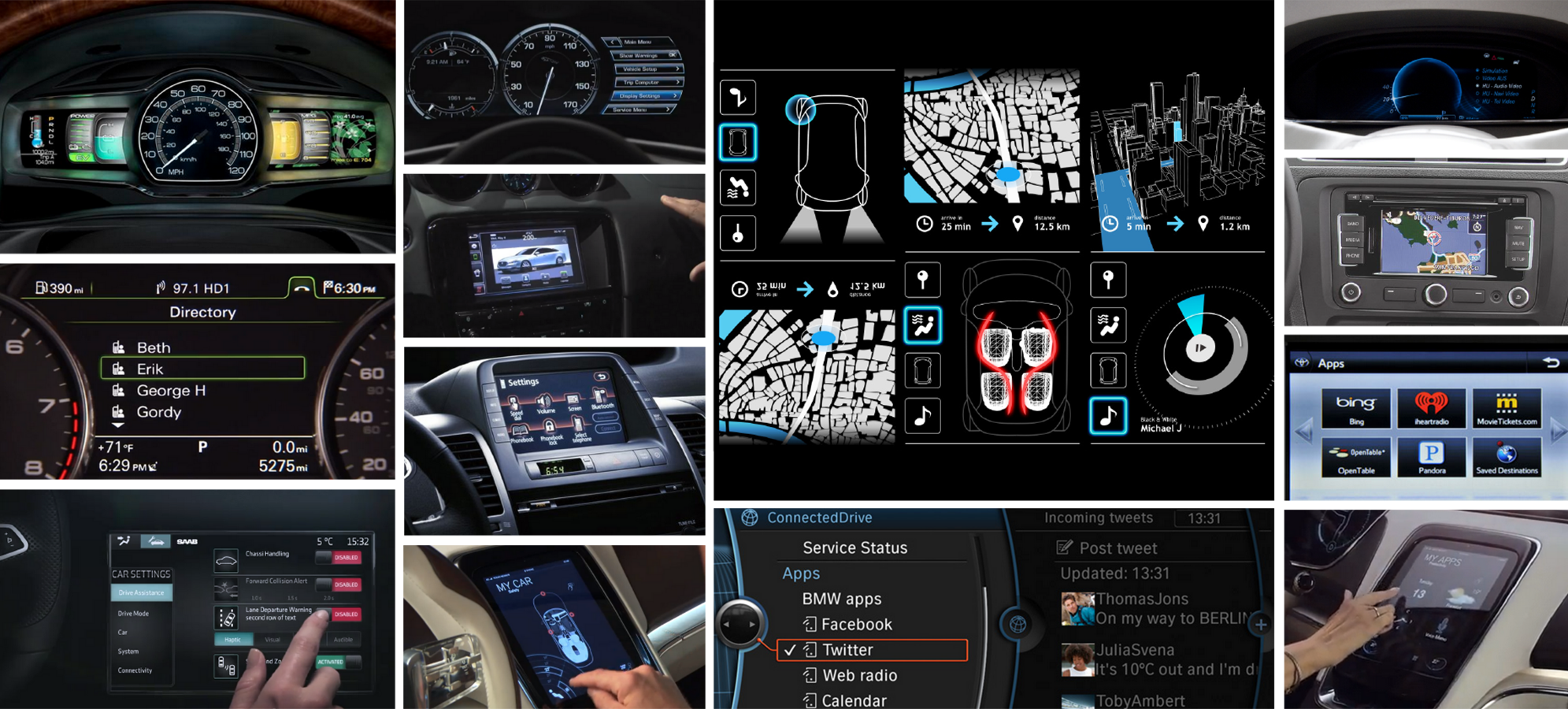Following on from last week’s five part series on the future of in-car HMI we’ve summarised below five bite size pieces of design advice for car makers.
We’ve also decided to share the entire thought piece in an easily downloadable PDF designed to be read as an e-book on iPad – which you can download! HERE. 
5 key pieces of design advice
- Lose the ‘stick a touchscreen on it’ approach: Because of long development cycles and silo mentality affecting design and engineering teams, the automotive industry is perpetually behind the curve and to seem responsive is tempted to do this or jump into bed with the consumer tech players trying to dominate the in-car space. Instead, the exterior styling, interior styling, trim and UI design teams need to work together from the very outset and by taking steps such as designing the HMI and UI in a templated, modular fashion from the start, to achieve the aspiration of one unified piece of design instead of the incongruous islands of interactivity that pass for HMI today. There are clear merits of creating a bespoke HMI for a specific vehicle or a range of vehicles vs. the connected car approach championed by the consumer tech giants. That is because crucially, both physical integration and computer hardware features are important to a meaningful HMI – not just software. In working with HMI we should make sure we are not amputating something fundamental about the experience of using a car.
- Love the user/driver: apart from adopting a one team collaborative approach to break down silos, make sure you design, build and test with users. Seek to achieve contextual empathy whereby you understand and design for the specific situation, which means the driver’s non driving time and non-drivers in the car.
- Less is more in a UX sense: The inherent complexity created by having so many more things to control in modern cars makes learning, and therefore cultivating muscle memory, hard. This is a particular problem with the advent of car sharing business models (not to mention safety). Remember how people got to grips with the format for the layout of controls created 80 years ago, so they could do things without thinking, across many models of car? Apply thinking from the most powerful cognition studies and you will see why this is still important. Further, our work led us to achieve minimum dwell time by improving legibility, introducing colour coding and grouping information for example (just three pieces of information per group at any one time, we established through testing).
- Little things count in a UI/visual sense: For example leave the Tron sci-fi styling to graphics in the 80’s, where they belong. When car makers do develop their own graphical user interfaces (GUIs) they are so masculine, cold, alienating and ugly. They are out of character with the thought that goes into exteriors and interiors. Also there is no space to express the brand, especially with the addiction to skeumorphism (applying visual cues to controls that recall physical features). Think about reintroducing colour to the HMI design as a whole, the positioning of information on screen and the positioning of hardware. Looking with fresh eyes at the whole experience meant we re-imagined everything up to and including the traditional speedometer.
- Listen up and get a feel for emerging technologies with the most potential: Key watchwords are ‘aural’ and ‘haptic’. Overall however, displays are here to stay, albeit integrated with other types of sensing and responsive technology because we believe that a combination of meaningful hard and soft interactions are the key to getting the best out of the HMI in a car.
So there you go – this is the last of our posts surrounding HMI for now and we hope you’ve enjoyed the series. We’ve touched upon interaction patterns (covering issues with muscle memory and regulations), taken a qualitative look at current on-screen interaction and visual design, briefly gazed into what the near future might look like and finally written a few words about our own approach to in-car HMI design here at ustwo studio.
Finally - make sure you download the PDF version of the entire series available HERE.
